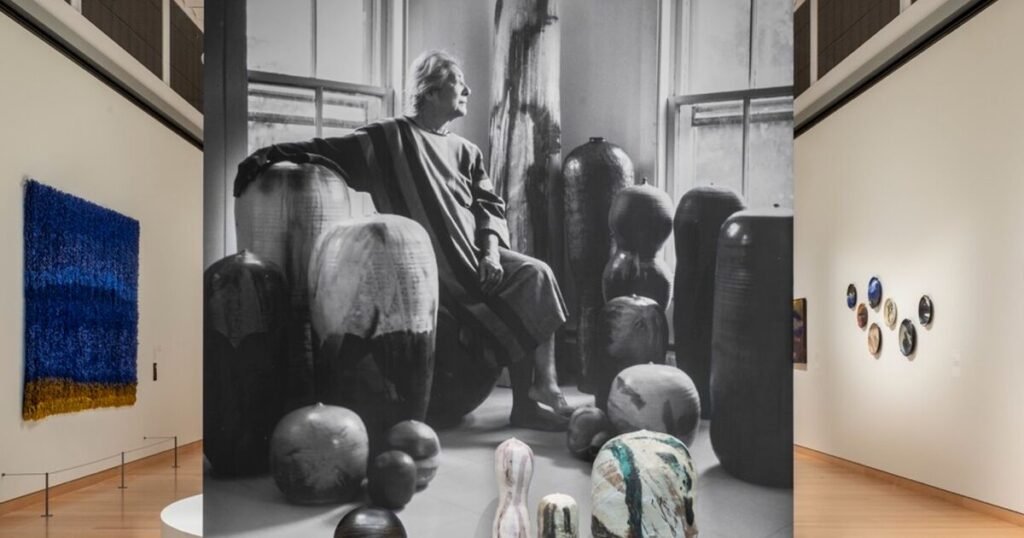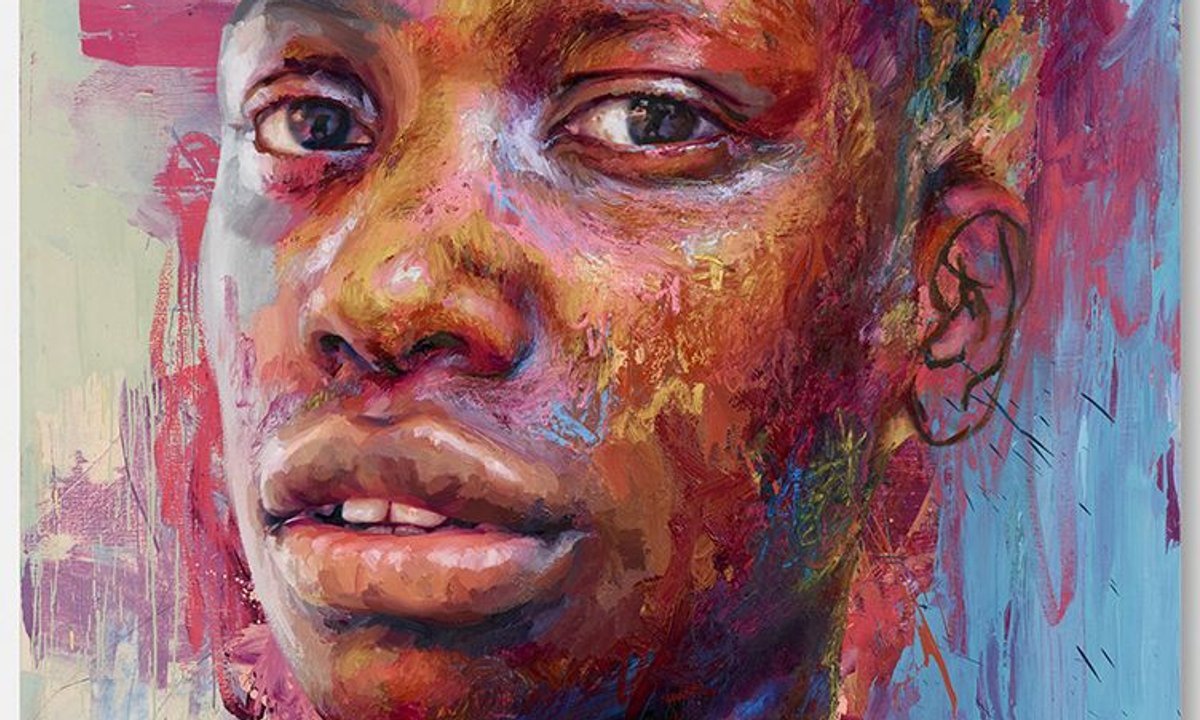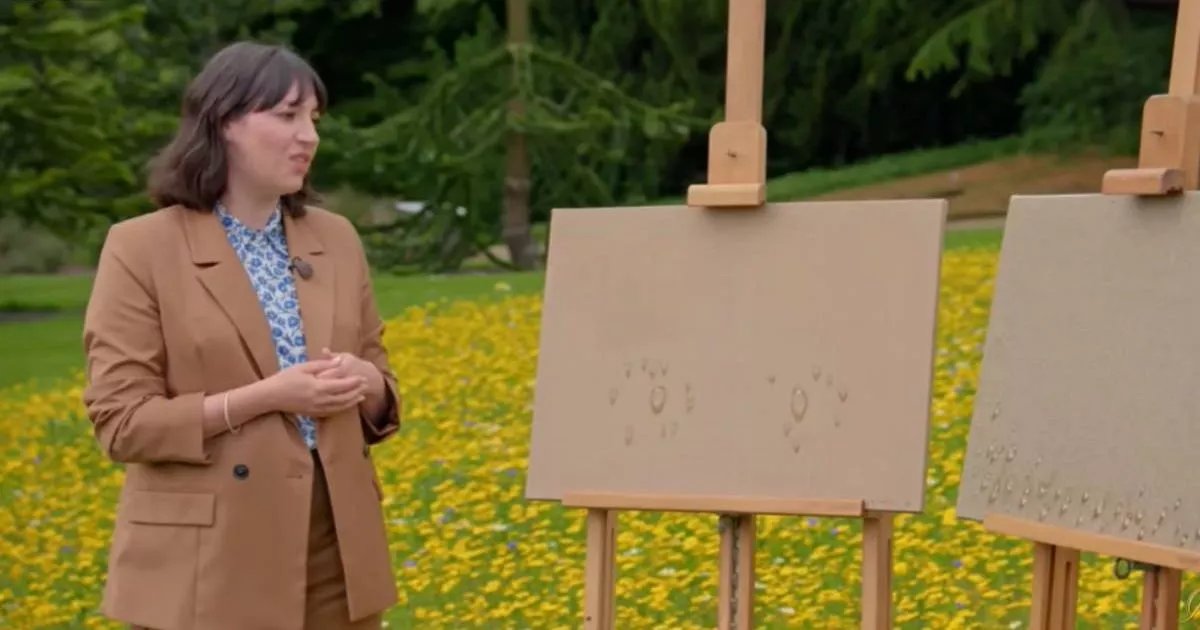Art
Jameson Johnson
Installation view of “Toshiko Takaezu: Shaping Abstractionat the Saundra B. and William H. Lane Galleries at the Museum of Fine Arts, Boston. Photo © Museum of Fine Arts, Boston.
For Toshiko Takaezu, the Japanese American artist at the center of the post-war ceramics movement, there was no separation between art, life, and spirit. Beauty, for her, was found in everyday acts, like preparing a meal, her sensibilities drawn from nature, and practice informed simultaneously by tradition and experimentation.
Twelve years after her death in 2011, Takaezu’s prolific career is taking center stage with a series of exhibitions that are celebrating the complexity of her heritage and the innovative nature of her practice outside of the realm of crafts or ceramics. A solo exhibition, “Shaping Abstraction” at the Museum of Fine Arts, Boston, opened on September 30th, the first of four that will feature Takaezu’s work within the year, with a major retrospective landing early next year at the Noguchi Museum. Meanwhile, at Crystal Bridges Museum in Bentonville, Arkansas, “Takaezu & Tawney: An Artist is a Poet”opens on October 14th with an exhibition that foregrounds Takaezu’s decades-long friendship with Lenore Tawney, an artist at the center of the fiber movement of the 1950s and ’60s.
Installation view of “Takaezu & Tawney: An Artist is a Poet” at Crystal Bridges Museum of American Art, Bentonville, Arkansas. Courtesy of Crystal Bridges Museum of American Art.
Takaezu is perhaps best known for pioneering “closed form” sculptures that transformed functional or craft objects into canvases for explorations of color and gesture. Recent reevaluations of her work, however, reveal Takaezu possessed a conceptual approach to artmaking that predated many of her male counterparts who rose to prominence in the 1950s and ’60s.
“I think the world is finally ready for Toshiko Takaezu,” said Nonie Gadsden, a curator at the MFA Boston who curated the artist’s current survey, which was co-organized by Isamu Noguchi Foundation & Garden Museum (where a companion retrospective will open in March 2024 before touring North America through 2026) with assistance from Toshiko Takaezu Foundation and the Takaezu family.
Portrait of Toshiko Takaezu, 1997. © Bobby Jae Kim. Photo by Bobby Jae Kim. Montreal Museum of Fine Arts, Liliane and David M. Stewart Collection, gift of Bobby Jae Kim. Courtesy of Museum of Fine Arts, Boston.
Toshiko Takaezu, Closed Form, 1980s. Reproduced with permission. Courtesy of Museum of Fine Arts, Boston. Gift of the artist. Photo © Museum of Fine Arts, Boston
To simply say she’s having a moment would be an understatement. While Takaezu was celebrated during her lifetime for both her pottery and her commitment to education, these exhibitions expand the viewer’s understanding of her practice that also included weaving, bronze casting, painting, and even installation and sound.
Meanwhile at Frieze Masters, New York–based gallery James Cohan will present Takaezu’s sculptures in the Spotlight section, curated by Valerie Cassel Oliver. “We’re excited by the opportunity to bring her work to London,” said Cohan. “The evolution of craft has already entered the art world, but with Takaezu, we’re focused on highlighting her instinct about painting that has a clear relationship with Abstract Expressionist sensibilities.”
Deep blues and purples awash with foggy grays and browns drape the rounded surfaces of Takaezu’s sculptures—a palette drawn from a lifetime spent commingling with the natural world. Large, urn-like pieces are closed with a pointed tip resembling a nipple, while oblong and bulbous totems curve in unexpected places. Inside the sculptures, Takaezu often placed a few clay balls which, when handled, would produce a rattling sound. Despite their playfulness, Takaezu’s works don’t necessarily evoke a sense of whimsy—they’re pensive and reverential with a quiet beauty that feels simultaneously contemporary and ancient.
Installation view of “Toshiko Takaezu: Shaping Abstractionat the Saundra B. and William H. Lane Galleries at the Museum of Fine Arts, Boston. Photo © Museum of Fine Arts, Boston.
“There can be a tendency to essentialize her work because she incorporated Eastern and Western sensibilities, but the way her identity appeared in her work is much more complicated,” Gadsden explained.
Born to immigrant Okinawan parents in Pepeekeo, Hawaii, in 1922, Takaezu was raised with her 10 siblings in a traditional Japanese household during an era where Okinawans faced discrimination both in Japan and in Hawaii. She began working with clay in a commercial setting in 1940 at the Hawaii Potters’ Guild in Honolulu, making pressed homewares. By 1945 she had enrolled at the University of Hawaii to study ceramics with pottery artist Claude Horan, before moving to attend Cranbrook Academy of Art in Michigan where she studied under Maija Grotell from 1945 to 1954. Under Grotell’s mentorship, Takaezu was encouraged to experiment and find her own artistic voice, an experience that deeply influenced Takaezu’s own approach to teaching others.
Toshiko Takaezu, Pacific Blue, 1980s. Reproduced with permission. Gift of the artist. Photo © Museum of Fine Arts, Boston. Courtesy of Museum of Fine Arts, Boston.
Portrait of Toshiko Takaezu, 1989. Photo by Charlotte Raymond. Toshiko Takaezu papers about 1925-2010. Archives of American Art, Smithsonian Institution. Courtesy of Museum of Fine Arts, Boston.
By the early 1950s, Takaezu was already pushing at the boundaries of ceramics as functional objects. She began experimenting with pieces like Double Spouted Bottle (1957) and stout vases conjoined at the center with narrow openings she called Family (ca. 1954–59). In 1955, Takaezu spent eight months on a trip to Japan that proved to be a pivotal moment in the artist’s career. On that trip, she deepened her connection with her Japanese heritage while learning from traditional and avant-garde ceramists. Upon returning to the U.S., Takaezu supplemented her personal practice with teaching; she spent nine years at the Cleveland Institute of Art and three at Cranbrook before taking on a role at Princeton that would make New Jersey her home for over four decades.
In 1976, Takaezu turned her Quakertown home into a studio where she would host dozens of live-in apprentices over 40 years. Joining Takaezu for tasks around the house, garden, and studio, students were taught to embrace her approach to finding art in the everyday. Today, the studio is preserved and still serves working artists and students, while many generations of her apprentices have gone on to have significant careers of their own.
“I remember hearing once that if an artist’s legacy isn’t secured within 10 years after their death, their careers can be overlooked or misunderstood,” said Darlene Fukuji, president of the Toshiko Takaezu Foundation and great-grandniece of the artist. “My [great] aunt was truly ahead of her time in how she thought about her work, but she was also very humble and believed that her art should speak for itself.”
Installation view of “Toshiko Takaezu: Shaping Abstractionat the Saundra B. and William H. Lane Galleries at the Museum of Fine Arts, Boston. Photo © Museum of Fine Arts, Boston.
Takaezu herself played a clever and crucial role in solidifying her own legacy. In 2006, just five years before her death in 2011, Takaezu began donating a selection of works to 16 museums including the Carnegie Museum of Art, Honolulu Museum of Art, and Racine Art Museum, among others. The gifts were gradually curated into exhibitions, including at the MFA Boston where a selection of Takaezu’s closed form sculptures were centered prominently in the 2019 exhibition “Women Take The Floor.”
According to Glenn Adamson, an independent curator and scholar who has contributed to the MFA Boston and Noguchi exhibitions as well as the forthcoming monograph, this is the moment to “establish a more sophisticated understanding of her work formally,” he said.
Toshiko Takaezu, 3/4 Moon, 1985. Reproduced with permission. Gift of Mary-Louise Meyer in memory of Norman Meyer.. Photo © Museum of Fine Arts, Boston. Courtesy of Museum of Fine Arts, Boston.
Takaezu developed her sculptures both as singular and collective objects that seemed to evolve along with her access to larger and larger kilns. Over time, works in her series “Moons” (1970s–2007) grew to over two feet in diameter with glazes that took on either smoky or vibrant qualities depending on her own alchemical formula. Tall, cylindrical structures she called “Tree Forms” (1982–87) were inspired by Hawaii’s Devastation Trail where volcanic eruptions have burned trees in their wakes. And by the late 1990s, sculptures like her “Star Series”—14 forms covered in elegant drips and speckles—had begun to tower above the artist’s own height.
Across her nearly 70-year-long career, Takaezu maintained a strong commitment to a palette informed by the landscapes she called home. A rich blue she called “Makaha” was inspired by her frequent visits back to Hawaii, while lush greens are attributed to her garden in rural New Jersey.
The colors that were the signature of her ceramic pieces always left room for chance; each firing was equal parts alchemy and experimentation, with colors revealing themselves after emerging from the kiln. Similarly, when speaking about her closed form sculptures, Takaezu expressed an interest in how the shape became an enclosure or a dark interior only activated by the rattle of the clay beads she placed inside. “A place of imaginative projection,” Adamson explained.
Installation view of “Toshiko Takaezu: Shaping Abstractionat the Saundra B. and William H. Lane Galleries at the Museum of Fine Arts, Boston. Photo © Museum of Fine Arts, Boston.
In the latter years of her career, a sustained interest in sound and a fascination with bronze yielded an unnamed series of bells inspired by Japanese temple bells (1990–2000s), which do not contain a clapper, and only produce a sound when struck.
Takaezu is among many 20th-century female and multiethnic artists whose works are only now being recontextualized. These exhibitions are also an opportunity to resituate the artist within the canon of post-war and contemporary art history. Perhaps Takaezu left something of herself in the rattles within her sculptures—always ready to make a sound when picked back up.
Correction: A previous version of this article stated that the Noguchi Museum exhibition will open in February 2024. It will open on March 21, 2024.






